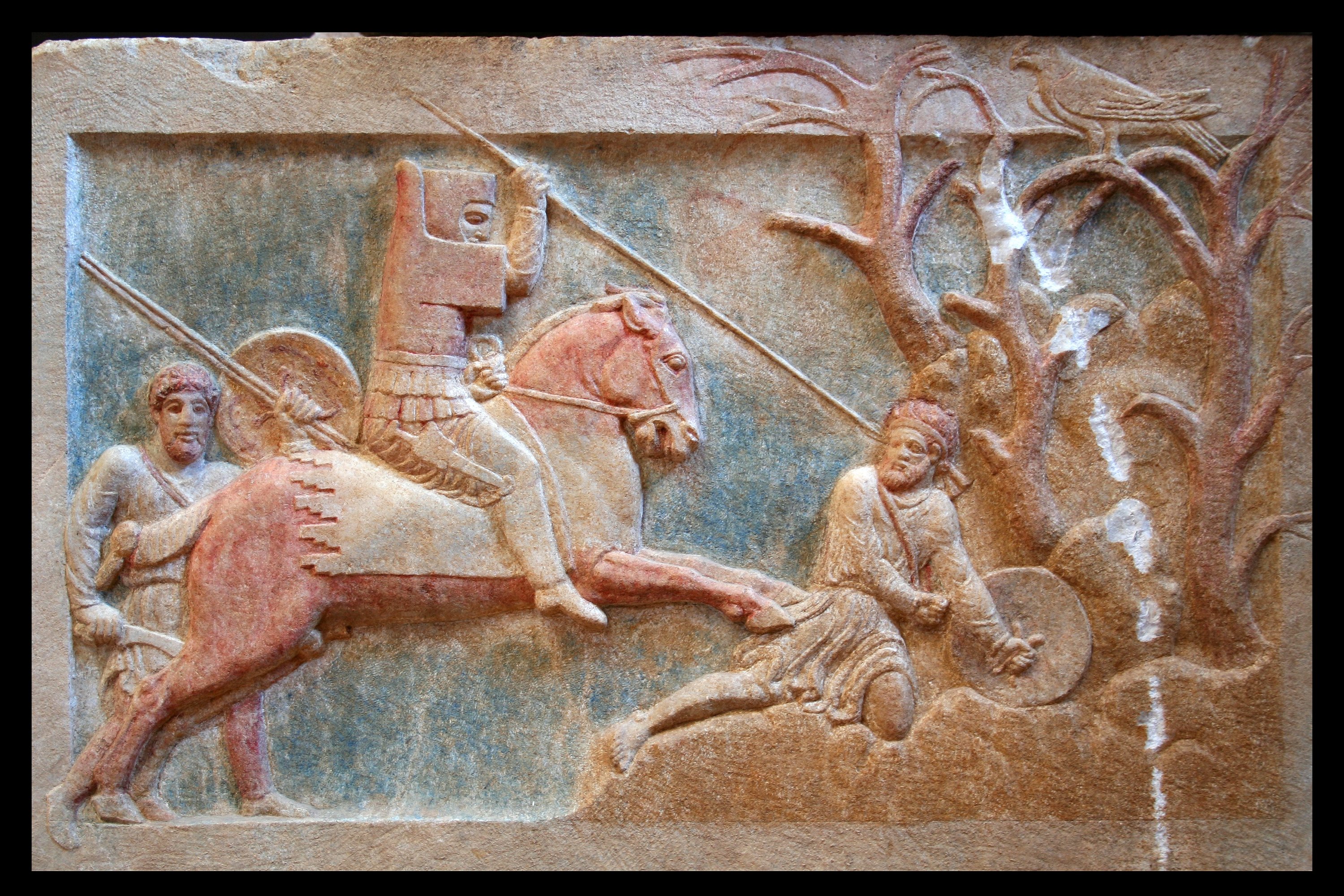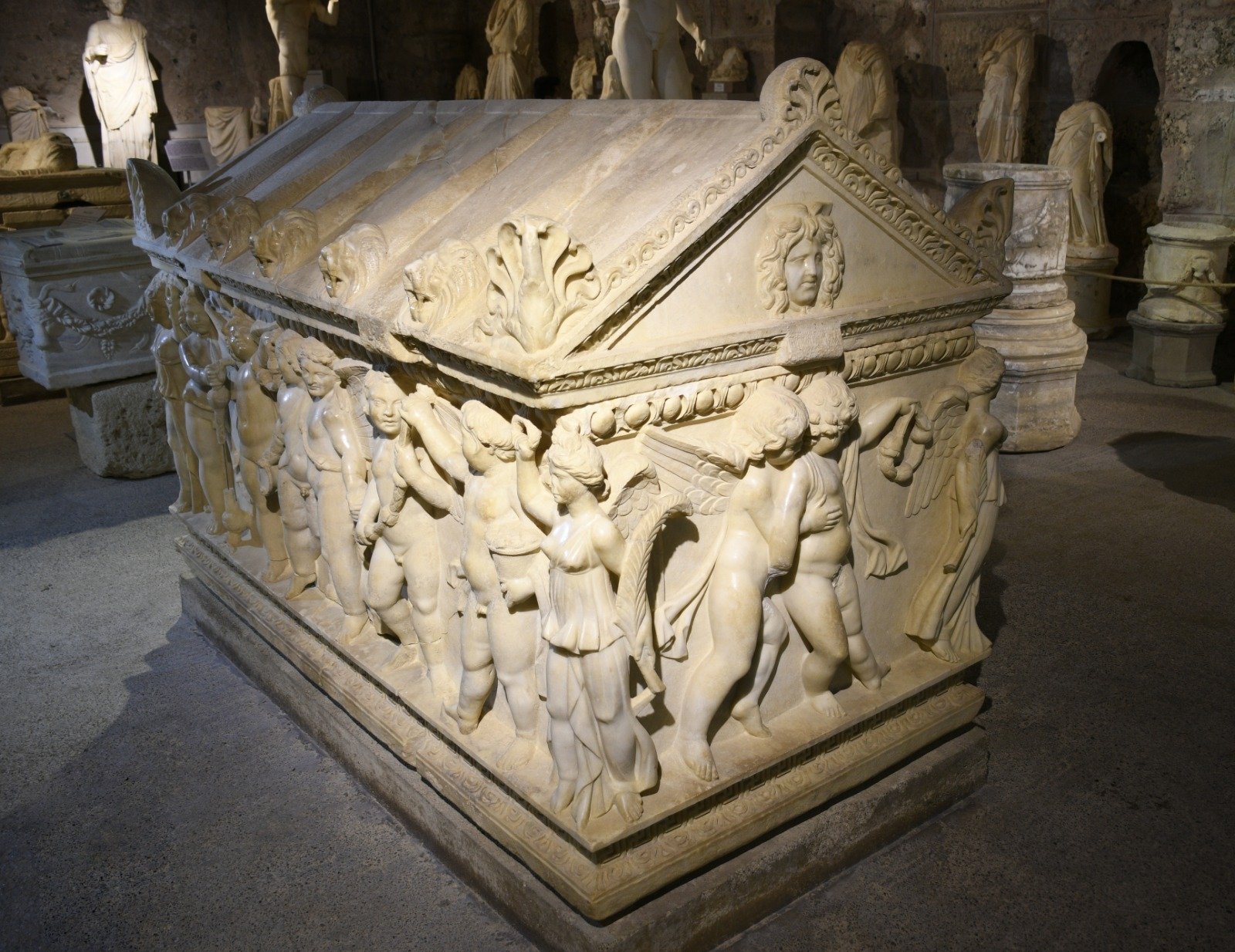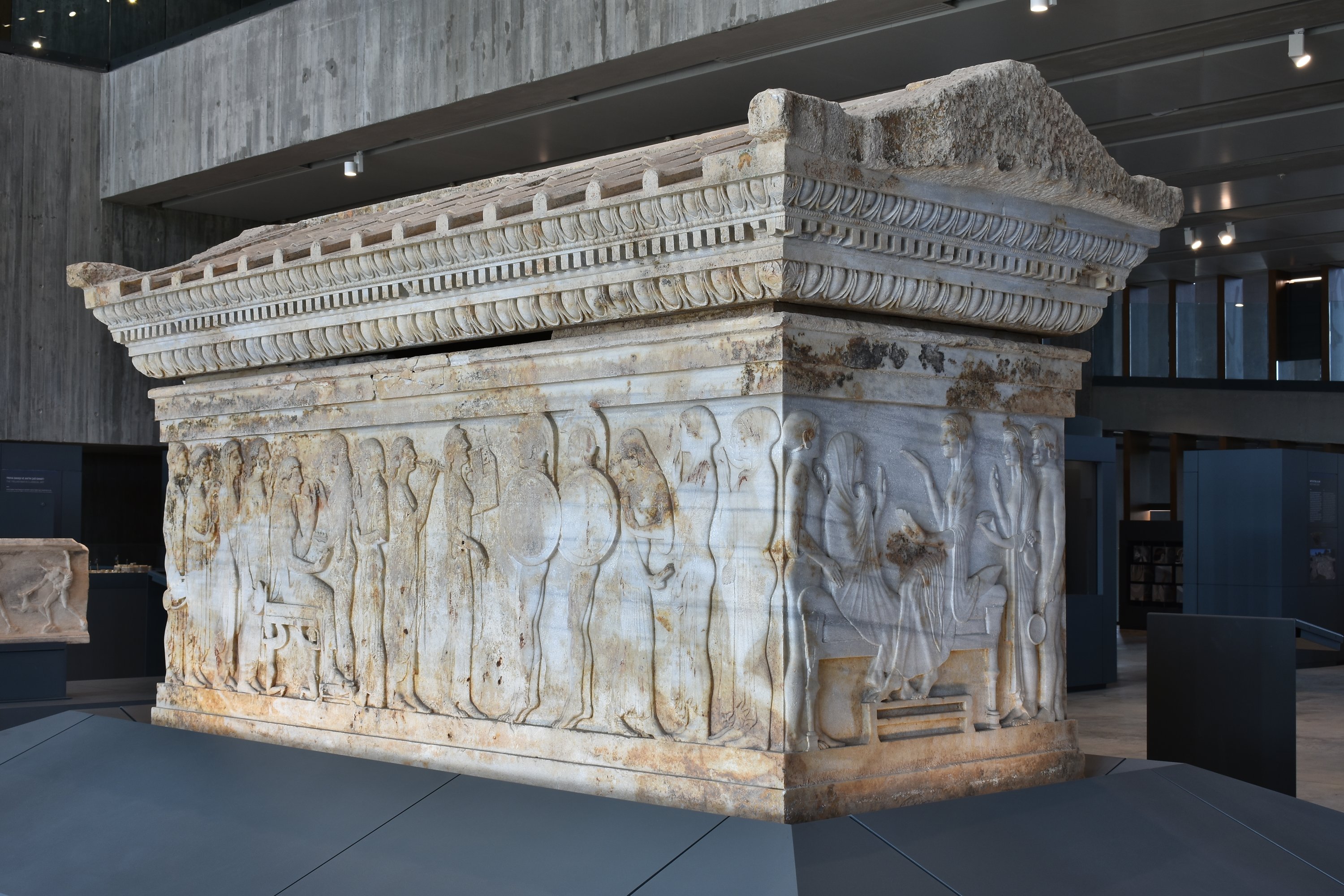İZMİR, Türkiye (AA): Carrying traces of different civilizations, the museums in Türkiye are home to world-famous sarcophagi that contain the immortal details of history and art
The world-famous sarcophagi (caskets) in the inventory of various museums in Türkiye are shown among the must-see artifacts of the country.
Anatolian geography, where great civilizations lived in history, hosts the ruins of different periods. Anatolia is an open-air museum with ancient cities, places of worship, theaters, towers, castles, palaces, bazaars, monuments and monasteries that have preserved their splendor for thousands of years.

Among these unique artifacts that Türkiye owns and sheds light on the history of world culture and art, spellbinding sarcophagi also hold an important place.
These sarcophagi, which were carved from various metals such as stone and marble to preserve the dead, date back to ancient history. They feature relief statues of the dead and decorations. Political and religious narratives are also depicted on the sarcophagi decorated with artistic motifs. Therefore, these art pieces provide important information about the period they were made.
12 must-see sarcophagi
Museums in various cities of Türkiye host world-famous examples of sarcophagi that have been preserved in their original form.

- Sidamara Sarcophagus: Sidamara, one of the sarcophagi carrying the immortal details of history and art, has been on display in Istanbul for 121 years. The artifact, which was found in the Ambar village on the Konya-Ereğli Karaman road, can be seen today in Istanbul Archeology Museums. The Sidamara Sorcaphagus dates back to the second-third century A.D. It is the world’s heaviest sarcophagus weighing 32 tons.
On the lid of the sarcophagus, made of white marble, the person who is thought to be the owner and his wife are depicted half lying down. There are two Eros depictions at the feet and head of these two figures. There is also a depiction of the struggle of Eros with animals such as lions, bears and panthers.
Sidamara Sarcophagus and its Eros head, which have been separated for more than 100 years, were reunited on June 10, 2022. As a result of the cooperation with the British Victoria and Albert Museum, the head of Eros has been relocated to where it belongs.

- Altıkulaç Sarcophagus: The Altıkulaç Sarcophagus or Çan Sarcophagus in the Troy Museum dates back to the beginning of the fourth century B.C.
The marble sarcophagus is of great importance as the painted scenes on it are very well preserved. It is estimated that the sarcophagus was built for an Anatolian dynasty that ruled about 2,500 years ago.
The long front side of the work, considered one of the rare examples that best illustrate the understanding of art in Anatolia after the arrival of the Persians, is divided into two by a tree figure in the middle. On the right, a boar hunting scene is engraved. The mounted figure is hunting a boar with his spear, while hunting dogs are also included in the fight. To the left side is a deer hunting scene.
- Alexander Sarcophagus: The Alexander Sarcophagus was found in 1887. Greek and Persian soldiers are depicted at war on the long front of the approximately 2,500-year-old sarcophagus. At the far left of the scene, the figure on the horse, which gives the sarcophagus its name, is thought to be Alexander the Great of Macedonia because he wears lion skin. The depiction, in which the movement is engraved very successfully, is considered to be a scene from the Battle of Issus, in which Alexander the Great defeated Persian King Darius III. A view of the Alexander Sarcophagus, Istanbul Archaeology Museums, Türkiye, Sept. 9, 2022. (AA Photo)
The Alexander Sarcophagus, whose color palette contains a very good chemical composition and is made of time-resistant purple, red, yellow, blue, scarlet brown and magenta, is among the important sarcophagi in terms of its construction technique and artistic quality.
- Heracles Sarcophagus: The Heracles Sarcophagus in Konya Archaeological Museum was found in 1958 during a construction. The sarcophagus, which is shown as the best example of the Heracles sarcophagi made in high relief technique in Anatolia, is thought to belong to one of the notables of the ancient city of Pappa. The deceased person is depicted on the narrow side of the sarcophagus, and mythological stories about Heracles are depicted on the other three sides.
- Sarcophagus of the Crying Women: The Crying Women Sarcophagus, one of the sarcophagi in the Istanbul Archaeological Museums, was named this way because of the iconographic scene on it. A view of the Sarcophagus of the Crying Women, Istanbul Archaeology Museums, Türkiye, Sept. 9, 2022. (AA Photo)
On the sarcophagus, which is thought to have been produced in the Classical Period Greek style, depictions of mourning women are placed. On the cover of the work, on the other hand, a funeral ceremony unique to Persian culture is described. There are some opinions that the sarcophagus belongs to Straton, King of Sidon (374-358 B.C.), who is said to be fond of pleasure and entertainment.
- Achilles Sarcophagus: The Achilles Sarcophagus, on which the war scenes called Attica are narrated, is on display at the Adana Museum.
In the depictions on the front side of the sarcophagus, with reference to the Trojan War in Homer’s “Iliad,” Achilles drags Hector’s corpse on the ground for days, out of pain and anger over the murder of his close friend Patroclus and Hector’s father Priamus kneels begging to ask for his son’s body.
- Sarcophagus of Aurelia Botiane and Demetria: The Aurelia Botiane Demetria Sarcophagus in Antalya Museum was taken from Perge Western Necropolis by smugglers in 1997 and was seized when it was about to be sold. A view of the Heracles Sarcophagus, Konya Archaeological Museum, central Türkiye, Sept. 9, 2022. (AA Photo)
In the work, which is an example of the Columnated Sarcophagus of Asia Minor, the face of the woman who owns the sarcophagus is depicted in the form of a portrait. In the middle of the short side face of the sarcophagus, there are two winged doors symbolizing the other world. On one of the long sides of the sarcophagus, there are scenes describing three events between the Trojans and the Achaeans in the Trojan War, which is described in Homer’s “Iliad.”
- Lycian Sarcophagus: There is a male and a female griffin face to face on one side of the lid of the Lycian Sarcophagus, which is in the form of an inverted boat. Both griffins stand on one leg, with three claws raised. Although the sarcophagus, dated to the fifth century B.C., was excavated from the King Necropolis of Sidon, it is called this name because of its similarity with Anatolian Lycian tomb monuments. The work is exhibited in the Istanbul Archaeology Museums.
- Eros Sarcophagus: The Eros Sarcophagus in the Side Museum is among the important sarcophagi in which Eros are depicted in all directions. There is a Medusa head on one side and a round shield relief on the other inside the pediments framed with various molding and decorated with acroteres (figurative or herbal ornaments) at the corners. The sarcophagus is dated to the last half of the second century A.D. in terms of its processing technique and style. A view of the Antakya Sarcophagus, Hatay Archeology Museum, southern Türkiye, Sept. 9, 2022. (AA Photo)
- Sarcophagus of Dionysus: The sarcophagus made of Pentelikon marble is dated to the second half of the third century A.D. with its portrait and stylistic features. There is a depiction of a myth from the “Iliad” on the front of the work. On the short sides of the sarcophagus, there is a vintage scene, which is often seen in the sarcophagi with Dionysus depictions. On stage, the Satyr and the Maenads are picking grapes. The sarcophagus can be visited in Antalya Museum.
- Polyxena Sarcophagus: The Polyxena Sarcophagus in the Troy Museum was found during the salvage excavation in the Çanakkale Kızöldün Tumulus in 1994, following an illegal excavation report. Polyxena belongs to the sixth century B.C. and is the earliest example of figurative sarcophagi in Anatolia. On one of its long sides, the sacrifice of Polyxena, the little daughter of King Priam of Troy and Queen Hecuba, is depicted. For this reason, the work is called the Polyxena Sarcophagus. A view of the Polyxena Sarcophagus, Troy Museum, Çanakkale, northwestern Türkiye, Sept. 9, 2022. (AA Photo)
- Antakya Sarcophagus: Unearthed during a foundation excavation in Antakya in 1993, the Antakya Sarcophagus is dated to the third century A.D. The artifact, which is exhibited in a special section of the Hatay Archeology Museum, has the shape of an inverted boat. It is believed the work was made for an aristocratic family due to the descriptions on it. On the lid part of the sarcophagus, there are figures of a man, a woman, two children, a horse and a bird with their faces undepicted. While various creatures decorate the edge of the lid, reliefs of Pan and Satyr have been placed on the corners. It was determined that the marble of the sarcophagus was found in the marble mines of Afyonkarahisar.






